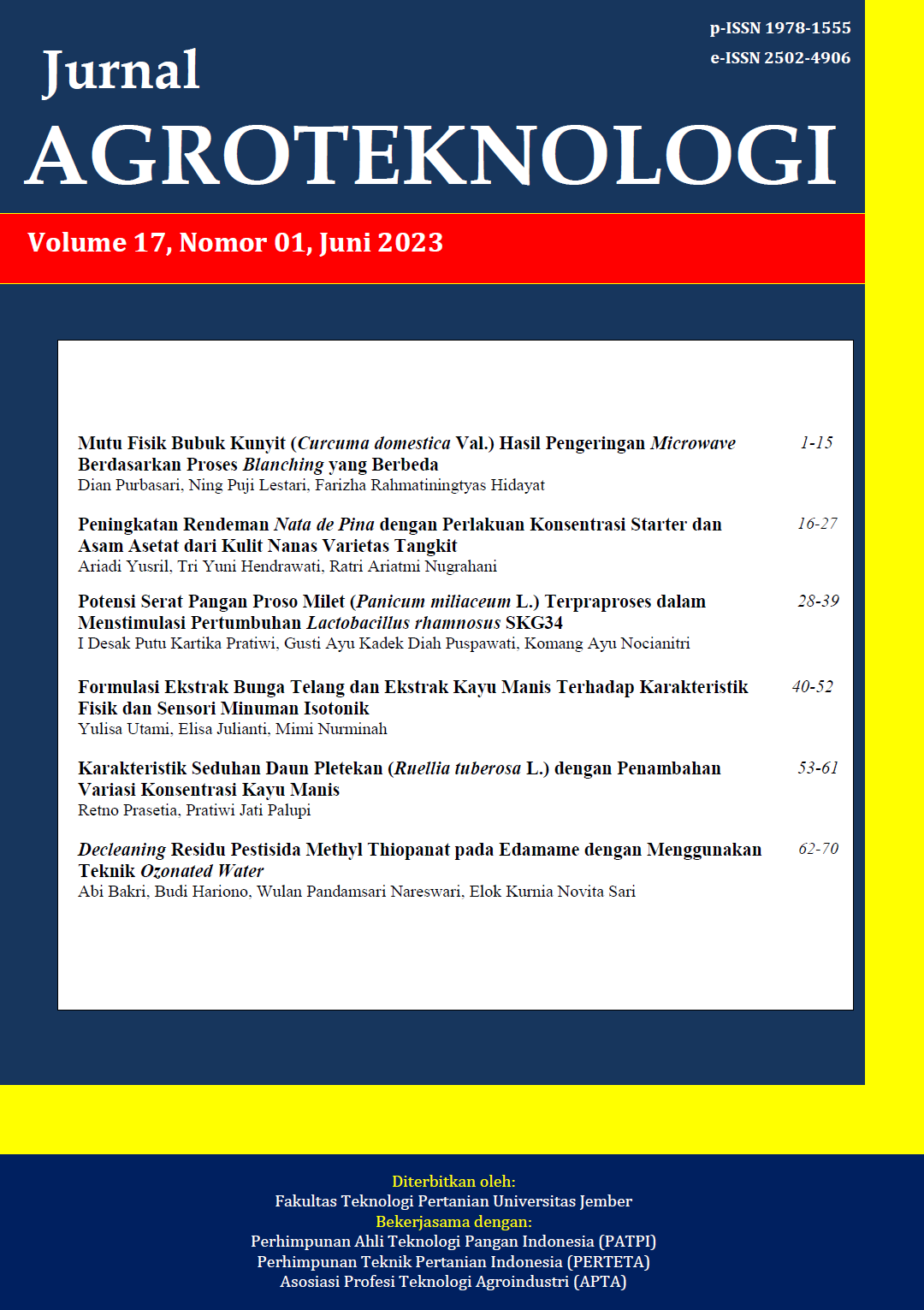Peningkatan Rendemen Nata de Pina dengan Perlakuan Konsentrasi Starter dan Asam Asetat dari Kulit Nanas Varietas Tangkit
DOI:
https://doi.org/10.19184/j-agt.v17i01.39099Abstract
Pineapple plantation area in Tangkit Baru Village of Jambi Province is 1,200 ha with 10,101 tons/year of production and the pineapple peel waste is estimated at 2,727 tons/year. That pineapple peel can be used as a medium for nata de pina production. The study was to obtain the optimum natural starter and yield of nata de pina from pineapple peel of Tangkit variety. Completely randomized design (CRD) study of various carbon source (2, 2.5, 3, 3.5, 4%) and nitrogen source (0.5, 1, 1.5, 2, 2.5%) with treatment variation of starter concentration (5; 10; 15; 20; 25%), and varous acetic acid (0, 0,75%). This study produced five types of ready-to-use natural starters namely starter de tangkit 1, 2, 3, 4, and 5. The population of bacteria for starter de tangkit 1–5 around 7.0×106 until 1.6×108 CFU/mL and reference starter (Hanum merk) of 7.6×107 CFU/mL. The starter de tangkit 1 was chosen because it produces the optimum yield value and could be used in coconut media. At a starter concentration of 10%, the treatment with 0.75% acetic acid, 2.50% sugar, and 0.5% sprout extract produced the highest yield of 57.52%, while without acetic acid only 19.36% (the highest yield was only 30,76%). Linear equation to optimum produce of nata de pina yield: Y = 55.4148–1.24 X1+0.6392 X2 (Y yield, X1 sugar, X2 sprout extract). The variation of 25% starter concentration showed an increase in yield value to 66%. Data analysis using two-way ANOVA showed carbon and nitrogen sources did not have a significant effect on nata de pina yield. The moisture content, fiber, and organoleptic were not significantly different from reference nata de coco (SNI 01-4317-1996), but not in the color. Nata de pina had brown color because made from the extracts pineapple peel of the Tangkit variety.
Keywords: acetic acid, nata de pina, pineapple peel, starter de tangkit
Downloads
Downloads
Published
Issue
Section
License
Jurnal Agroteknologi has CC-BY-SA or an equivalent license as the optimal license for the publication, distribution, use, and reuse of scholarly work. Authors who publish with this journal retain copyright and grant the journal the right of first publication with the work simultaneously licensed under a Creative Commons Attribution-ShareAlike 4.0 International License that allows others to share the work with an acknowledgment of the work's authorship and initial publication in this journal.
 JURNAL AGROTEKNOLOGI
JURNAL AGROTEKNOLOGI 








.png)
